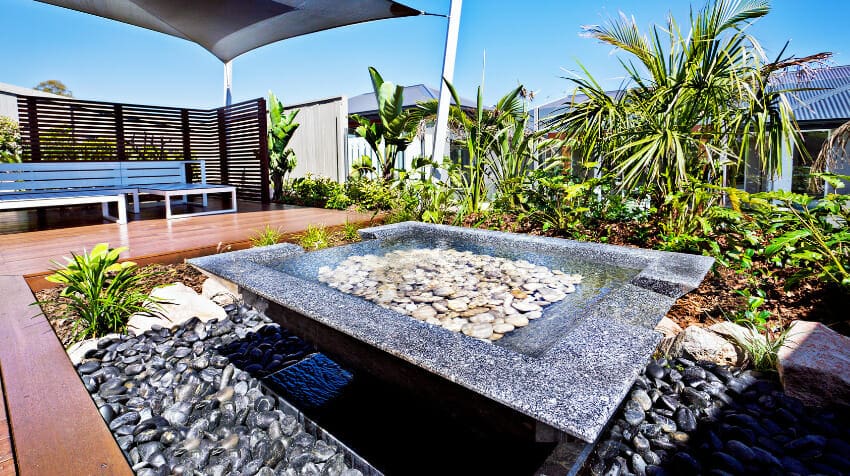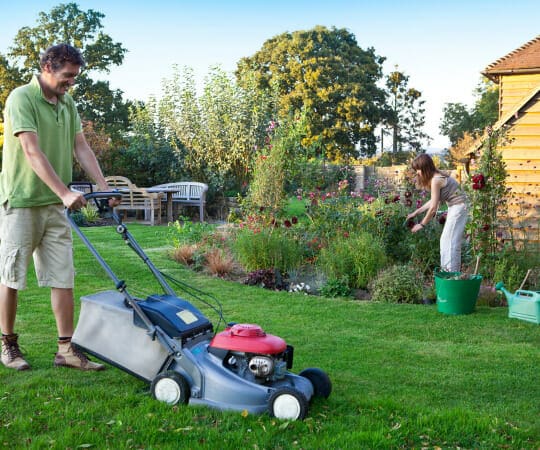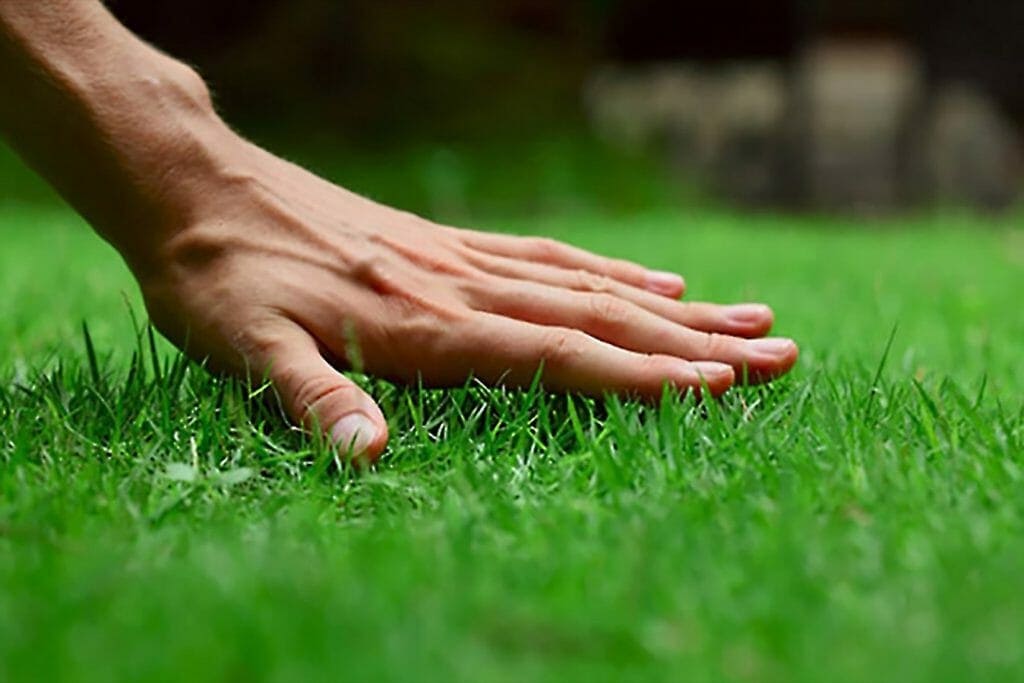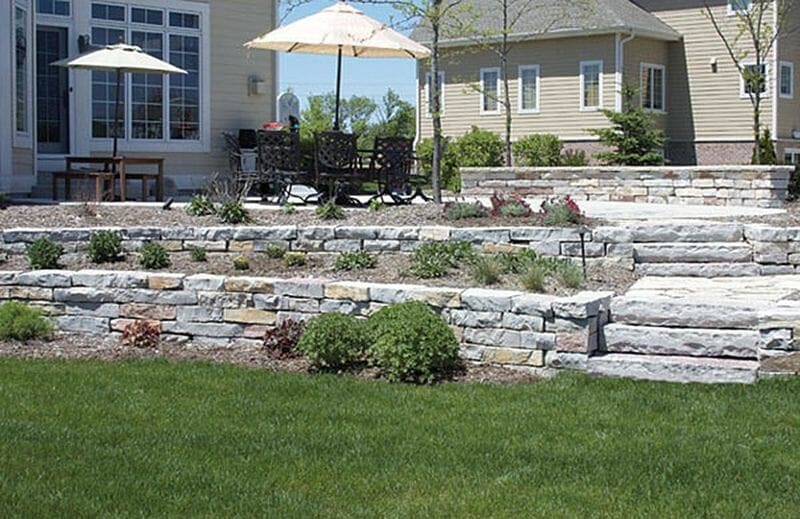Discover the Art of Garden Planning: Create a Breathtaking Backyard Oasis
Are you tired of looking at your dull and lifeless backyard? Do you want to transform it into a picturesque oasis that will leave your guests in awe? The secret lies in garden planning. By following a few simple steps, you can unlock the potential of your outdoor space and create a beautiful sanctuary that will bring joy to your life for years to come.
The first step is to assess your outdoor space. Take note of the amount of sunlight, soil quality, and drainage in different areas of your yard. This information will help you select the right plants for each location.
Next, choose plants that are suitable for your climate and soil type. With a little research, you can find flowers, shrubs, and trees that will thrive in your specific environment.
Once you have selected the perfect plants, it’s time to design your garden layout. Don’t worry if you’re not an artist – there are plenty of online tools and resources available to help you plan out the perfect arrangement for your new oasis.
With some patience and creativity, anyone can design a stunning garden that will impress their friends and family alike.
Assess Your Outdoor Space
You’ll want to take a good look at the area outside your home to properly evaluate what changes you can make for a more appealing outdoor environment. Start by assessing the size of your backyard and determining how much space you have to work with.
Maximizing space is key in creating a picturesque oasis, so consider removing any clutter or unnecessary items that may be taking up valuable real estate.
Once you have a clear idea of how much space you’re working with, it’s time to start choosing the right furniture. When selecting outdoor furniture, it’s important to keep both style and function in mind.
Look for pieces that are durable enough to withstand various weather conditions, but also add an element of beauty to your outdoor space. With the right furniture in place, you’ll be one step closer to creating your dream garden paradise!
Now, let’s move on and talk about how to select the right plants for your backyard oasis.
Select the Right Plants
Picking out the perfect plants for your outdoor space can make all the difference in creating a beautiful and thriving garden. When selecting plants, it’s important to consider their compatibility with each other as well as their seasonal variety. This will ensure that your garden is both visually appealing and healthy.
Before you start planting, research which plants thrive in your specific climate and soil type. Consider factors like sun exposure and water requirements when choosing where to place each plant. With careful planning and attention to detail, you’ll be able to create a stunning garden that flourishes throughout the seasons.
As you select your plants, keep in mind how they will fit into the overall design of your backyard oasis.
In the next section, we’ll explore how to layout your garden for maximum impact.
Design Your Garden Layout
It’s crucial to carefully design your garden layout in order to achieve the maximum impact for a stunning and thriving outdoor space.
Consider creating color schemes that complement each other and add interest, such as pairing warm colors like reds and oranges with cool blues and purples.
You can also choose focal points, such as a water feature or sculpture, to draw the eye and create visual interest.
In addition to aesthetics, consider sustainability when designing your garden layout.
Eco-friendly options include using native plants that require less water and maintenance, incorporating rain barrels or drip irrigation systems to conserve water usage, and using organic fertilizers instead of harmful chemicals.
With these factors in mind, you can create a beautiful garden that not only looks great but is also environmentally conscious.
Now it’s time to implement your garden plan by selecting materials and getting started on planting!
Implement Your Garden Plan
Now that you’ve got your garden plan in place, it’s time to put it into action!
First up is preparing your soil. This involves removing any weeds or debris, loosening the soil, and adding compost or fertilizer as needed.
Next, it’s time to install your plants according to your layout. Make sure to give them enough space to grow and follow proper planting techniques for each type of plant.
Finally, add some finishing touches such as mulch or decorative elements to really make your garden shine. With these key steps completed, you’ll be on your way to a beautiful and thriving garden!
Prepare Your Soil
To ensure your plants thrive, you’ll need to get your hands dirty and properly prepare the soil. Start by testing your soil to determine its pH level, nutrient composition, and texture. Soil testing kits are available at local garden centers or online.
Once you’ve determined the state of your soil, you can begin preparing it for planting. If your soil lacks nutrients or organic matter, consider adding compost to enrich it. Composting is a natural process that breaks down organic materials such as leaves, grass clippings, and food waste into a nutrient-rich fertilizer for your plants. You can purchase compost from a local garden center or create your own by collecting these materials in a bin and allowing them to decompose over time.
Remember that healthy soil is the foundation for a thriving garden – take the time to properly prepare it before installing your plants!
Now that you’ve prepared your soil, it’s time to install your plants.
Install Your Plants
You’re ready to get your hands dirty and start installing those beautiful plants. But before you start digging holes, it’s important to consider some planting techniques that will ensure the best growth for your new additions.
First, make sure to dig a hole that is twice as wide and just as deep as the plant’s container. This will give the roots plenty of room to spread out and establish themselves in their new home.
Next, be mindful of the seasonal planting schedules for each type of plant. Some plants thrive in cooler temperatures while others prefer warmer weather. If you’re unsure about when to plant a certain species, do some research or ask a local gardening expert for advice.
By following these planting techniques and seasonal schedules, you’ll set your plants up for success and create a flourishing garden.
As you finish installing your plants, it’s time to add those finishing touches that will really bring your backyard oasis together.
Add Finishing Touches
Adding the right finishing touches to your garden is like putting the cherry on top of a sundae – it’s that final touch that takes something good and turns it into something truly special.
Accessorize your garden with items such as birdbaths, fountains, sculptures, or even a bench where you can sit and enjoy the beauty around you. These additions not only enhance garden aesthetics but also create an inviting atmosphere for both humans and wildlife.
Another way to add those final touches is by incorporating lighting into your garden design. Whether it’s string lights draped over trees or lanterns placed along walkways, lighting can transform your backyard oasis from daytime retreat to nighttime haven.
With these simple additions, you’ll be able to create a picturesque outdoor space perfect for relaxation and entertaining.
Now that your garden looks stunningly beautiful, let’s move on to maintaining its beauty throughout the seasons!
Maintain Your Garden
Now that you’ve implemented your garden plan and transformed your backyard into a picturesque oasis, it’s time to maintain it.
To keep your plants healthy and thriving, there are three key points to focus on: watering and fertilizing regularly, pruning and weeding consistently, and addressing any pest or disease issues promptly.
By following these steps, you’ll ensure that your garden remains beautiful for years to come.
So roll up your sleeves, grab those gardening gloves, and let’s get started!
Water and Fertilize Your Plants
Keeping your plants well-watered and fertilized is essential for their growth and health, so make sure to stay on top of these tasks regularly. Proper watering techniques involve giving your plants enough water without drowning them. You should also be mindful of the type of soil you have and how much sun exposure your plants are getting.
As for natural fertilizers, they’re a great way to keep your garden healthy without using harsh chemicals that could harm the environment or your family. To give life to your backyard oasis, consider these tips:
- Use rainwater to water your plants
- Make compost from kitchen scraps for a natural fertilizer
- Consider using worm castings as a nutrient-rich soil additive
- Mulch around the base of plants to retain moisture and prevent weeds
- Use organic pest control methods instead of harmful chemicals
Remember that watering and fertilizing your plants isn’t just about keeping them alive – it’s about helping them thrive! By taking care of these basic needs, you’ll be rewarded with vibrant blooms and lush greenery in no time.
Now that you know how to keep your garden healthy, let’s move on to the next step: pruning and weeding regularly.
Prune and Weed Regularly
It’s crucial to regularly prune and weed your plants if you want them to flourish; neglecting these tasks could result in a jungle-like garden that’s nearly impossible to navigate.
Pruning involves trimming back overgrown branches and stems, promoting healthy growth and preventing disease. Weeding, on the other hand, involves removing unwanted plants that compete with your desirable ones for nutrients and water.
To get started on pruning and weeding, you’ll need the right tools. For pruning, invest in a good pair of shears or loppers depending on the size of the branches. For weeding, use a hoe or cultivator to loosen soil around weeds before pulling them out by hand or using a weed trimmer.
The benefits of regular pruning and weeding are plenty – you’ll have healthier plants with stronger roots, better air circulation which reduces fungal diseases, more flowers or fruits because energy is focused towards producing those instead of excess foliage, and most importantly – an aesthetically pleasing garden that you can enjoy all year round!
To address any pest or disease issues in your garden, it’s important to stay vigilant while pruning and weeding since early detection is key. Keep an eye out for signs such as wilting leaves or spots on foliage which may indicate infection by bacteria or fungi. If necessary, take action by using organic methods such as spraying neem oil or introducing beneficial insects like ladybugs into your garden ecosystem.
By maintaining a healthy balance between pests and predators while staying on top of maintenance tasks like pruning and weeding, you’re well on your way to transforming your backyard into the picturesque oasis of your dreams!
Address Any Pest or Disease Issues
To keep your plants healthy and disease-free, you’ll need to be vigilant when it comes to pruning and weeding, as well as keeping an eye out for any signs of pests or disease that may require organic intervention.
One way to address pest or disease issues is by using natural remedies instead of chemical treatments. For example, you can make a garlic spray by blending garlic cloves with water and spraying it on affected leaves. This will help repel insects without harming the plant.
Preventive measures are also crucial in avoiding pest or disease problems. This includes maintaining proper plant spacing, watering regularly but not excessively, and removing any infected parts immediately.
Early detection is also key in addressing these issues before they become too severe. Regularly inspect your plants for any signs of damage or discoloration. By taking these steps, you can ensure a thriving garden that is free from harmful pests and diseases without resorting to harsh chemicals.
Frequently Asked Questions
How do I deal with pests and diseases in my garden?
Imagine waking up to find your garden overrun by pests and diseases. It’s a nightmare scenario for any gardener, but fear not! Integrated pest management is the key to combatting these issues.
By using natural remedies like insecticidal soaps, neem oil, and companion planting, you can control pests without harming beneficial insects or pollinators. Not only does this approach protect your garden ecosystem, but it also saves you money on expensive chemical treatments. Plus, it’s a sustainable solution that aligns with the organic gardening movement.
So don’t let pests and diseases get in the way of your dream backyard oasis – take control with integrated pest management!
What are some creative ways to incorporate sustainable practices into my garden design?
If you’re looking for ways to make your garden more sustainable, consider incorporating vertical gardening and rainwater harvesting.
Vertical gardening allows you to maximize space by growing plants upwards instead of outwards, which is especially useful in smaller gardens or urban areas. You can use trellises, hanging baskets, or even create a living wall with plants like succulents or herbs.
Rainwater harvesting involves collecting rainfall in barrels or tanks and using it to water your plants instead of relying on municipal water supplies. This not only helps conserve water but also reduces runoff and erosion.
By incorporating these sustainable practices into your garden design, you can create a beautiful and eco-friendly oasis right in your backyard.
How do I create a garden that is accessible for people with disabilities?
To create an accessible garden, start by designing your garden paths to be wide and level with a non-slip surface. Incorporate adaptive gardening tools such as raised garden beds or vertical gardens that can be easily reached from a seated position.
Make sure any handrails are sturdy and at the appropriate height for wheelchair users. Consider adding sensory elements like scented plants or wind chimes to enhance the experience for those with visual impairments.
With careful planning and attention to detail, you can create a beautiful and functional space that’s welcoming for all abilities.
Can I use raised beds in my garden and how do I build them?
Raised beds are a great option for maximizing garden space. They are easier to maintain than traditional gardens and offer benefits such as improved drainage, better soil quality, and fewer weeds.
There are DIY options and pre-made options available for building raised beds. DIY options allow for material choice and cost control, while pre-made options may be more convenient but come with a higher price tag.
Materials used for raised beds can vary from wood to concrete blocks or even recycled materials such as old pallets or tires. Maintenance is relatively simple – just keep the soil moist and add compost or fertilizer regularly.
Using raised beds in your garden can create a beautiful and productive oasis that will impress visitors!
How do I choose the right type of soil for my plants?
Choosing the right type of soil for your plants is like choosing the right foundation for a house. Just as a sturdy foundation supports and nourishes a building, the right soil type will support and nourish your plants to ensure healthy growth.
There are several types of soil to choose from, such as sandy, loamy, clayey, or silty soils. Each has its own unique characteristics that can affect plant growth differently.
Sandy soils drain quickly but do not hold nutrients well, while clayey soils tend to retain water but can become compacted over time. Loamy soils are often considered ideal due to their balance of sand, silt, and clay particles, which promote both drainage and nutrient retention.
Ultimately, the key is finding the right soil type for your specific plants to thrive in – one that provides proper drainage and nutrient availability so they can grow strong and healthy roots, leading to an abundant harvest come time for harvesting season!
Conclusion
Congratulations! You’ve now unlocked the secrets of garden planning and you’re on your way to transforming your backyard into a picturesque oasis.
By assessing your outdoor space, selecting the right plants, designing your garden layout, implementing your plan, and maintaining your garden, you’re well on your way to creating an outdoor haven that you’ll love spending time in.
Did you know that, according to a study by the National Gardening Association, 35% of all households in America grow food either at home or in a community garden? That’s right – gardening is not just a hobby but also an important aspect of sustainable living.
With proper planning and care, you too can join this growing trend and enjoy fresh fruits and vegetables from your own backyard.
Remember, gardening is not only beneficial for the environment but also for your mental health. It provides a therapeutic outlet for stress relief while allowing you to connect with nature.
So what are you waiting for? Get out there and start planning today!
Related Sources:
SECRET GARDEN IDEAS: HOW TO CREATE A MAGICAL BACKYARD HIDDEN GARDEN





